Slobot About Town CXXXVIII:
 |
Slobot goes to Landsford Canal State Park!
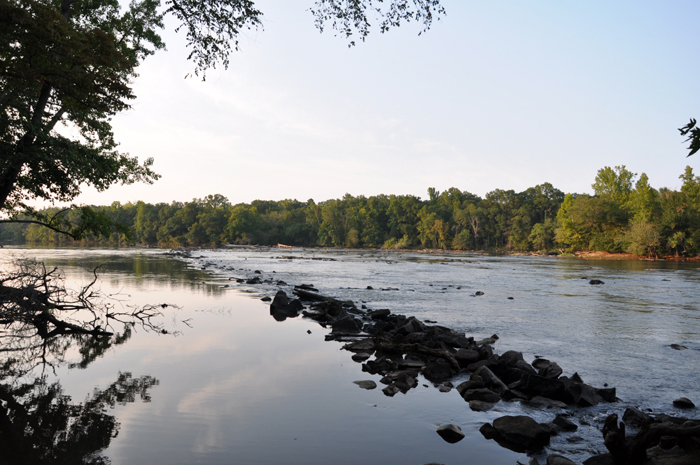
Slobot was cantering about Catawba, SC when he spied a stone diversion dam. The dam juts from the bank into the Catawba River at a ~40 degree angle. While it may not look like much, it long served a purpose - to divert water into the Landsford Canal. |
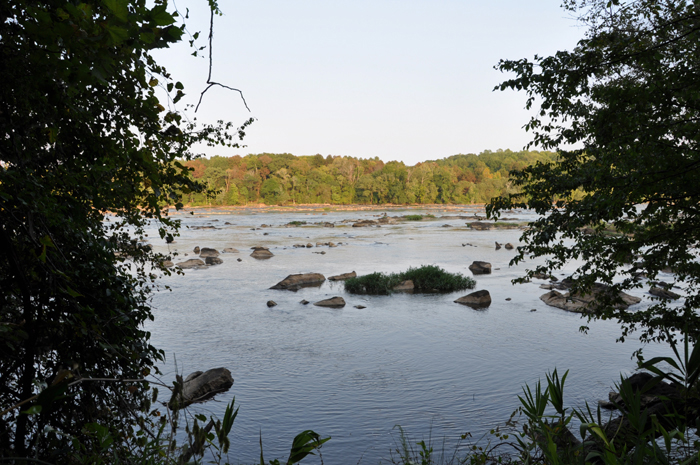
The Catawba looks calm, but that calm belies the fact that the river, over the next 2 miles, drops 34 feet in elevation. In addition to the steep drop in elevation, the water here is shallow and full of protruding rocks. This combination made passage difficult, if not impossible, for barge traffic. |

In the pre-railroad era rivers were the best way of moving freight. To make barge passage possible, a canal was built along the Catawba in 1832. That canal would come to be known as the Landsford Canal, and it would serve as a vital transportation link for some 15 years. |
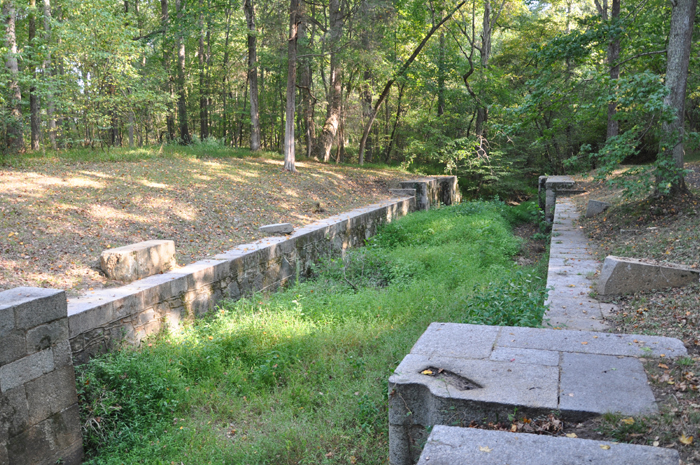
The stone diversion dam funneled water into the guard lock. Slobot could see the the rounded channels in the stone on either side of the lock. These channels were where wooden doors, dubbed "mitre gates," were once hinged. |
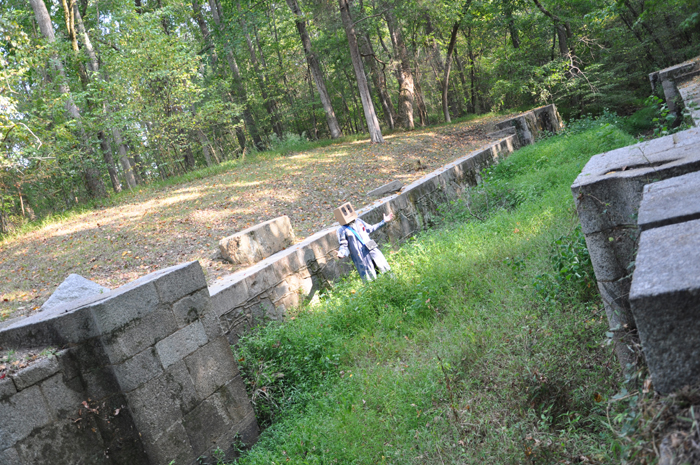
This particular lock is a guard lock designed to protect the canal from flooding. Other locks in the canal are designed in much the same way, only their purpose is to raise or lower barges as they pass through the canal. |
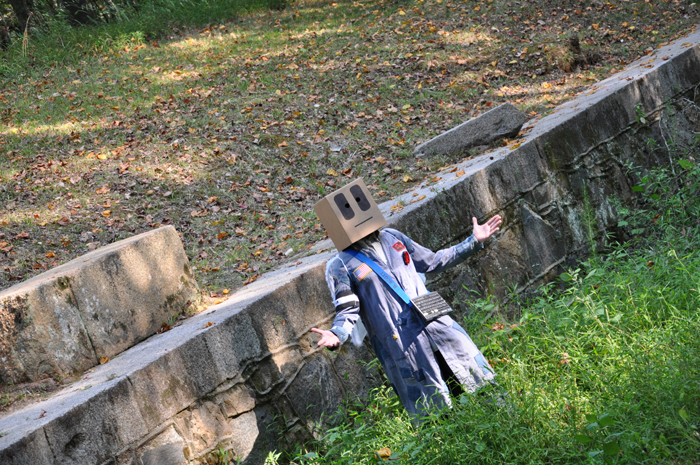
Landsford Canal has 3 locks. These locks allow river traffic to overcome the elevation difference along a 2-mile section of the Catawba River that runs parallel to the canal. |
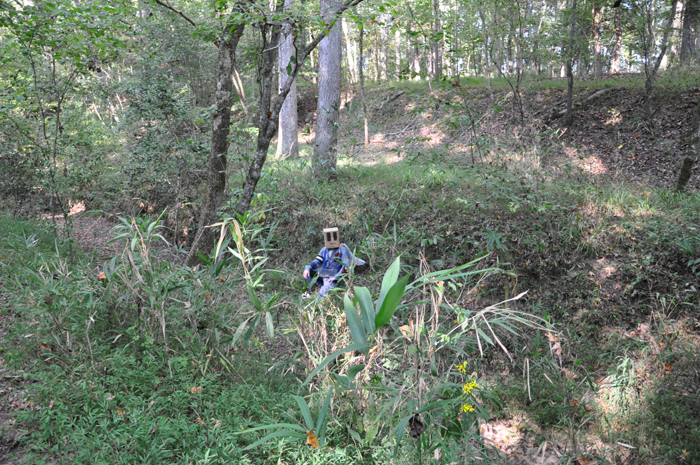
Today much of the canal is overgrown and difficult to discern. Slobot could almost disappear in the foliage.
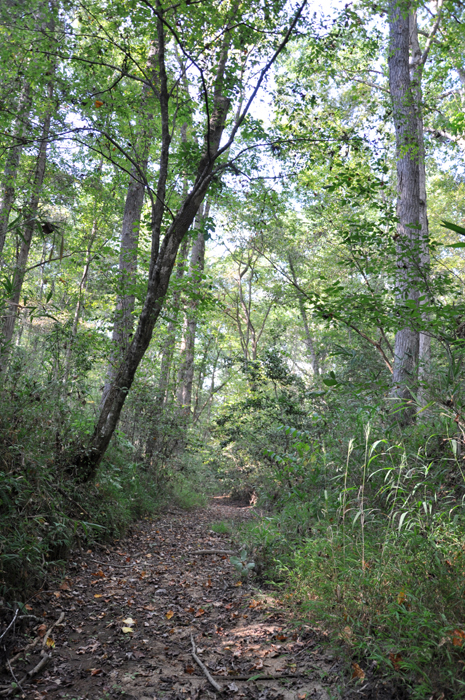
Slobot could almost imagine what the area must have looked like back in 1754 when Thomas Land was granted this tract. |
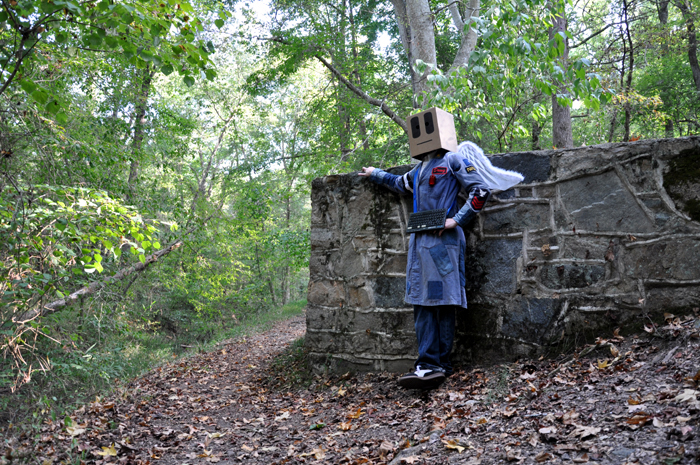
As Slobot strolled, he found a stone bridge abutment. The abutment was for the first of 4 bridges that crossed the canal on its two-mile path along the Catawba. The bridge that once sat upon this abutment was a simple wooden truss structure. Simple though it may have been, it allowed people to cross the canal. After crossing the canal people could then cross the Catawba. This section of the river was, historically, where people crossed. In 1780 Lord Cornwallis and his Army crossed here after falling back from Charlotte following the Battle of Kings Mountain. |
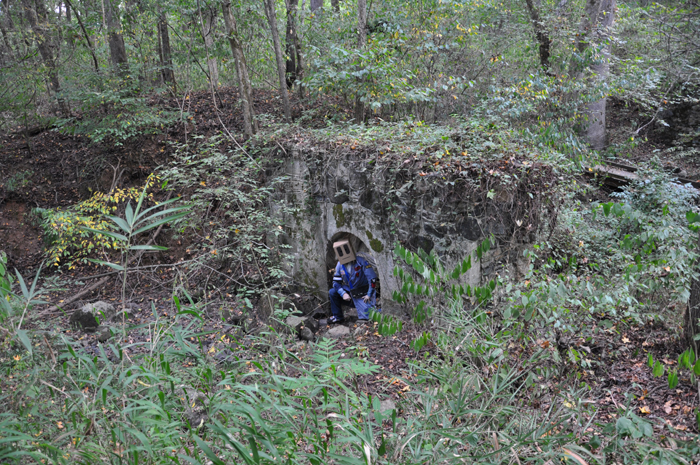
Slobot then discovered the first of several culverts along the canal's path.
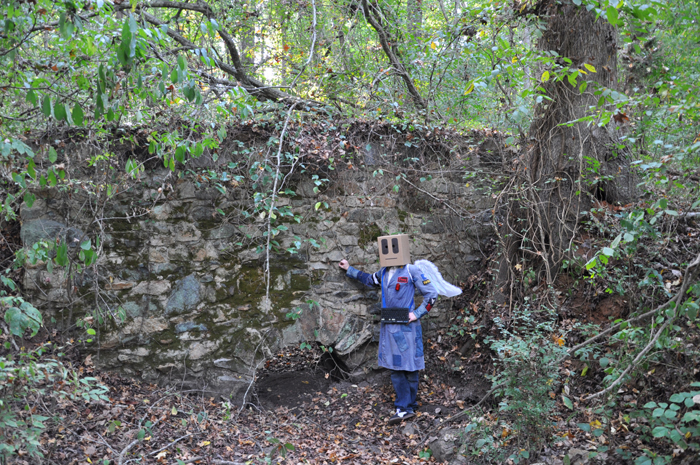
Some of these culverts were bigger than others, but they all were built to stave off damage to the fragile canal bed. |
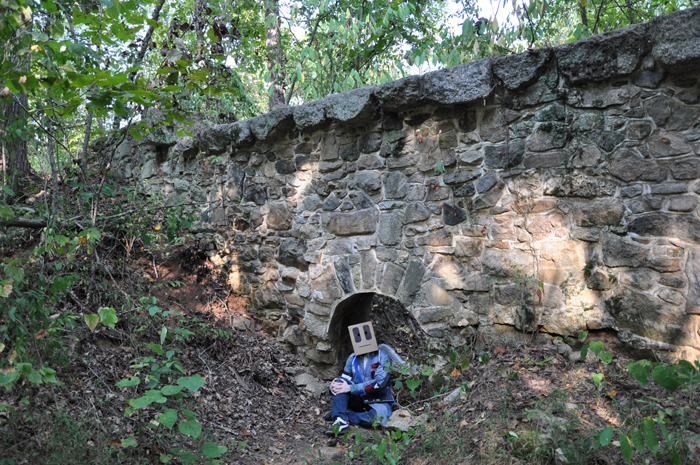
Some of the culverts were built over streams that crossed the canal's path. In this case the culvert would allow the stream to flow through the arch under the canal, with the canal actually running over the culvert. |
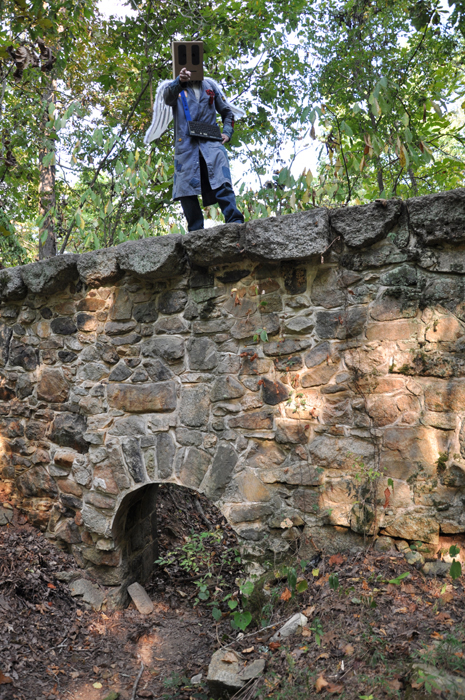
Other culverts, like this one, were used to control the water level in the canal. A stream passed under the canal through the opening at the bottom, and the top acted as a spillway, draining overflow back into the river. |
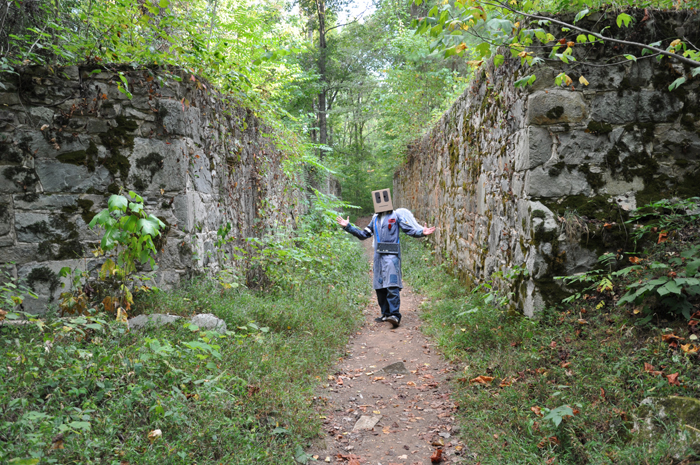
One of Slobot's favorite parts of the park was the mill complex, which sits about halfway along the canal. The mill was built in ~1810 by William Richardson Davie. The canal passed between these retaining walls, which were designed to protect the foundation of the mill from running water. |
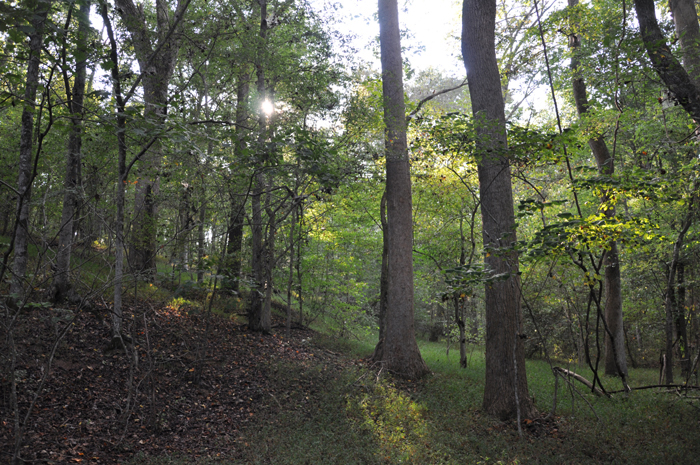
The mill ground grain and sawed lumber using the power of the canal's water.

South of the mill complex are the upper lifting locks. This is where one can really see the elevation that barges could gain or lose on their way through the canal. Doors originally affixed to the masonry to Slobot's right and left. Once a barge passed through the doors, the doors would close and stay closed until the water level on either side of the gates was equalized. |
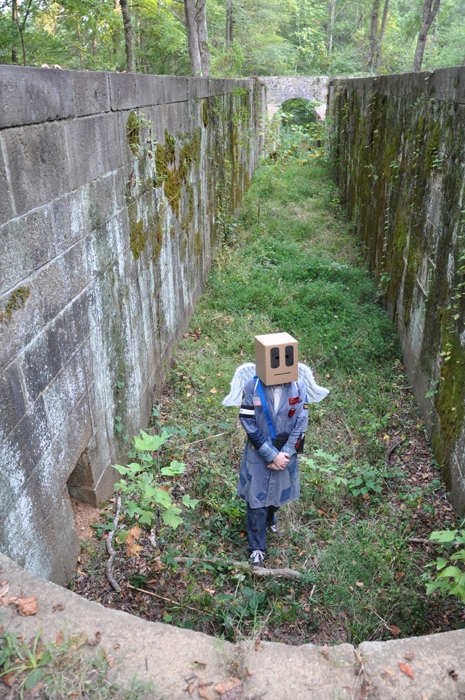
The water depth in the locks was adjusted by opening and closing small doors over channels in the walls.
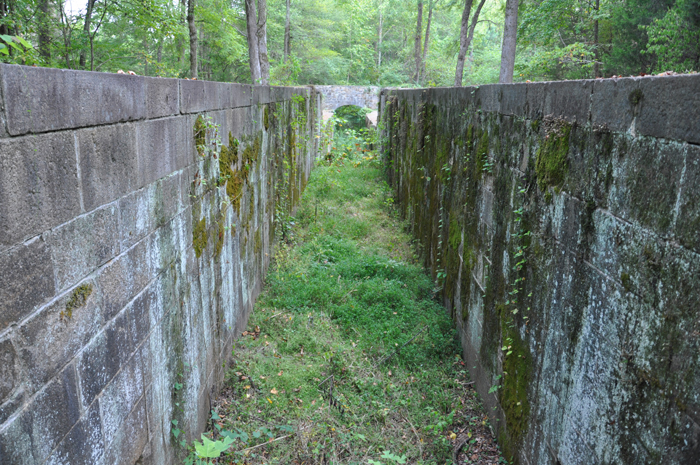
This lock is actually a double lifting lock, and the elevation difference from one end to the other is significant.
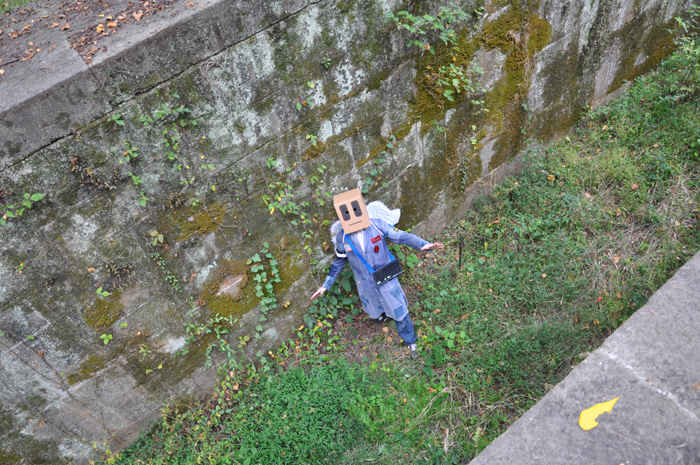
The overall depth of the canal is also greater. Slobot started to feel dwarfed and trapped by the great stone walls that towered over him. |
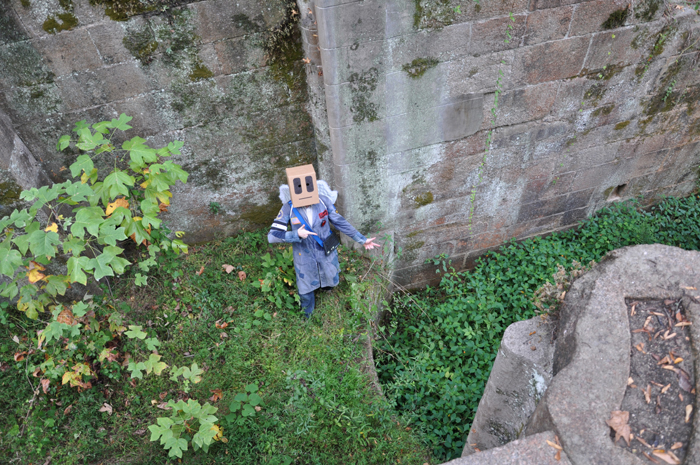
As this is a double lifting lock the elevation drops again (or rises again - depending on which way one is traveling). |

This last drop brings the canal and the Catawba to the same elevation.
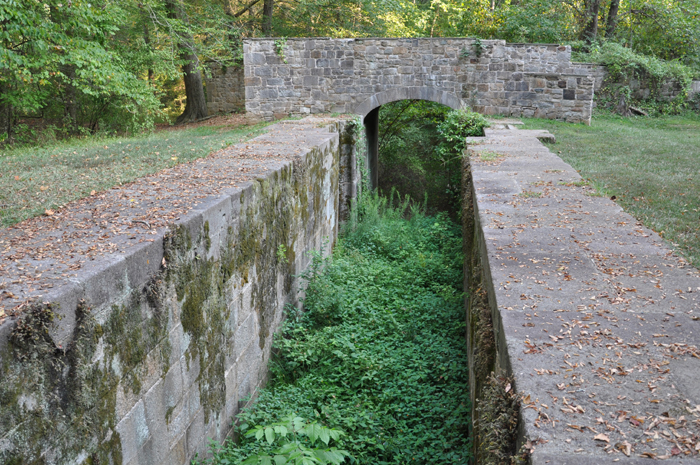
Passing on through the canal one passes under a great stone foot bridge.
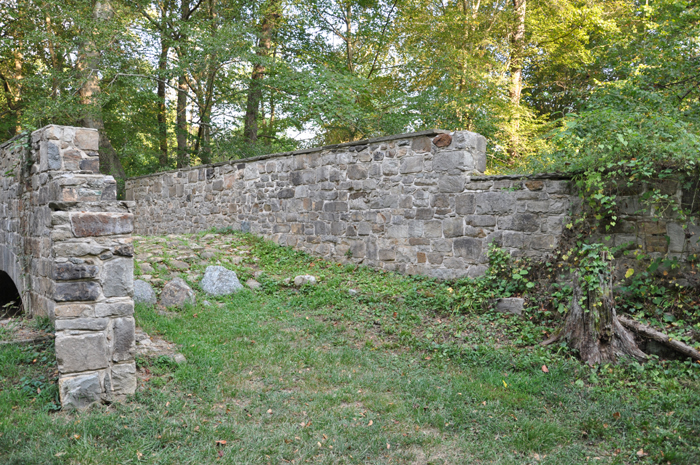
Much of the fine stonework seen at the Landsford Canal is courtesy of Irish masons. The Irish were also instrumental in building another of Slobot's favorite canals, the Columbia Canal in Columbia, SC. |
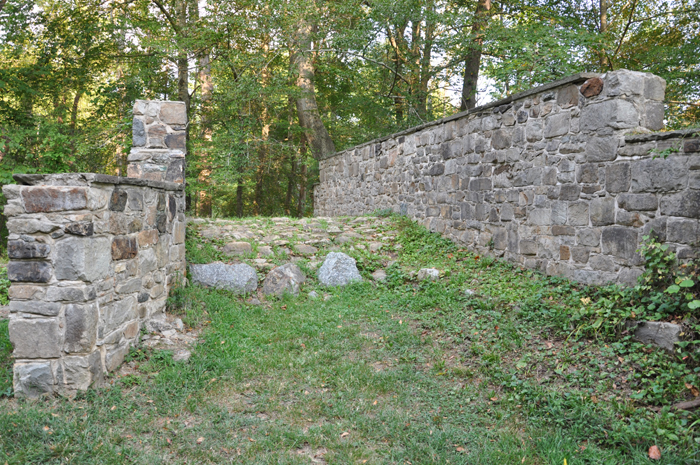
The Irish masons working the Landsford Canal worked under the master contractor Robert Leckie of Scotland. |
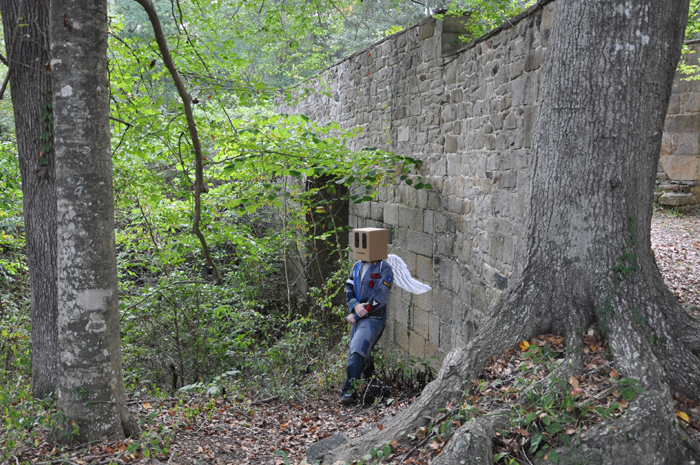
Robert Leckie is also responsible for the design of the canal.
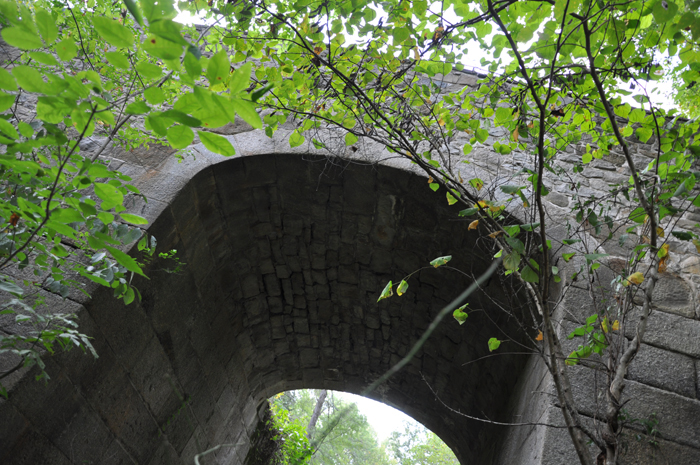
While Leckie did much of the design work and construction, the man that really made the canal happen was William R. Davie. |
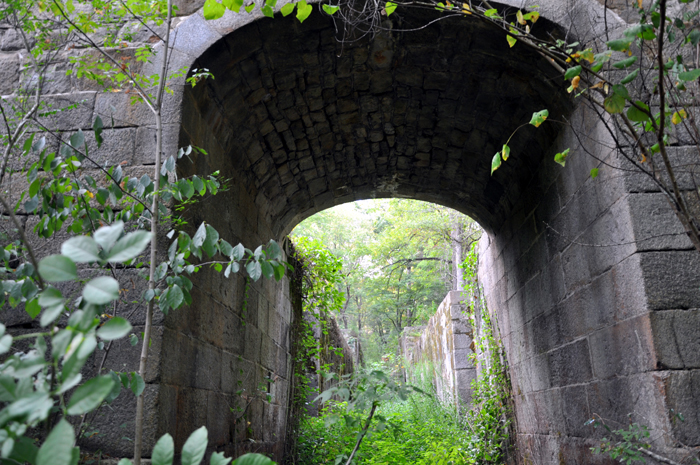
Davie was a general, lawyer, educator, statesman and dreamer who also donated the land for the project.
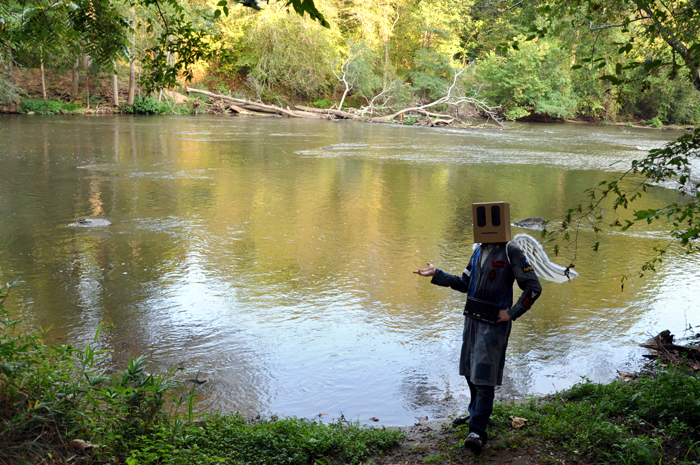
Water coursing through the canal would have traveled 2 miles horizontally and 30+ feet vertically before rejoining the Catawba River. Here, the river is free of shoals, and the waters are calm - perfect for barge traffic. Slobot loved the Landsford Canal State Park! This episode is dedicated to Jason "The Love Commander" Leaphart (1977-2016). He was a founding member of Slobot and this web site. He took all of the photos in this episode of Slobot About Town. |
